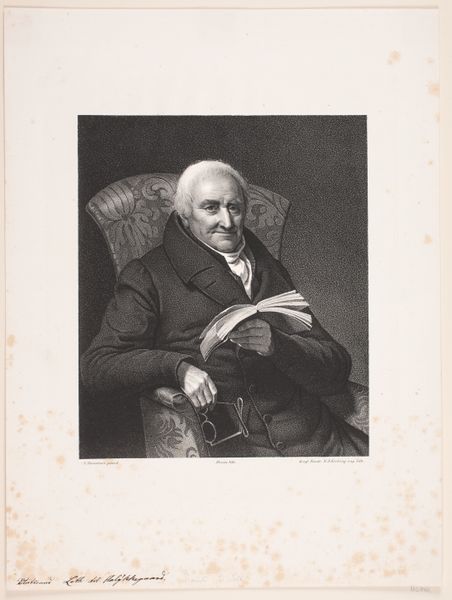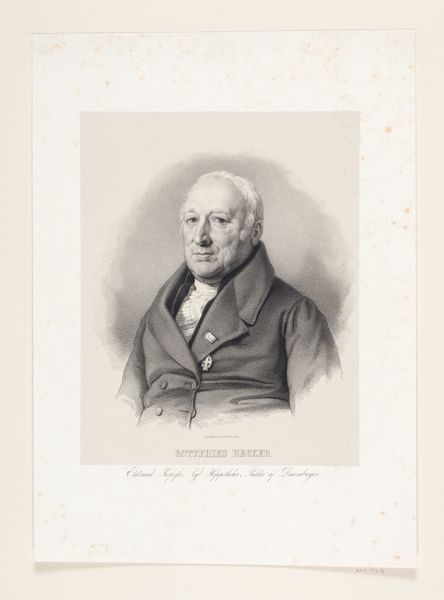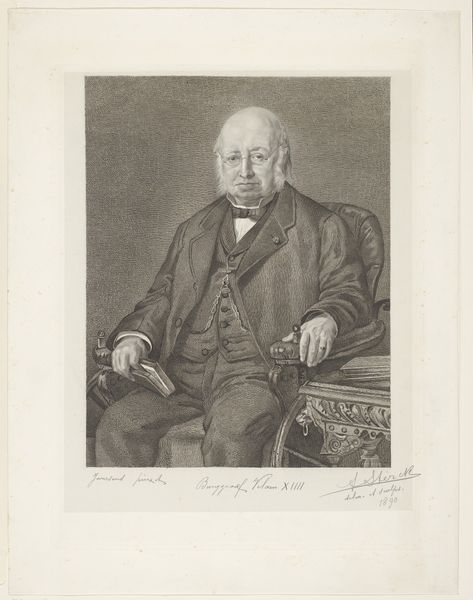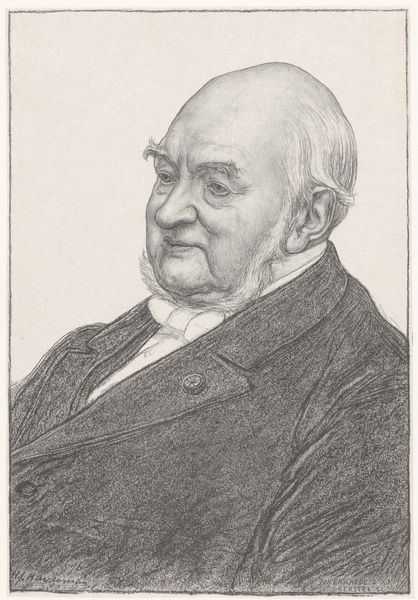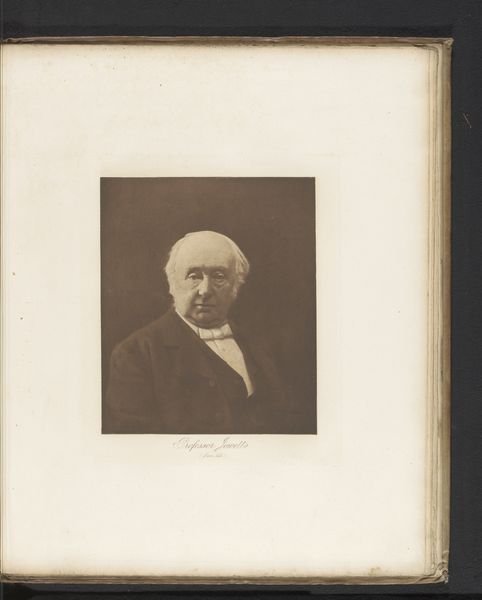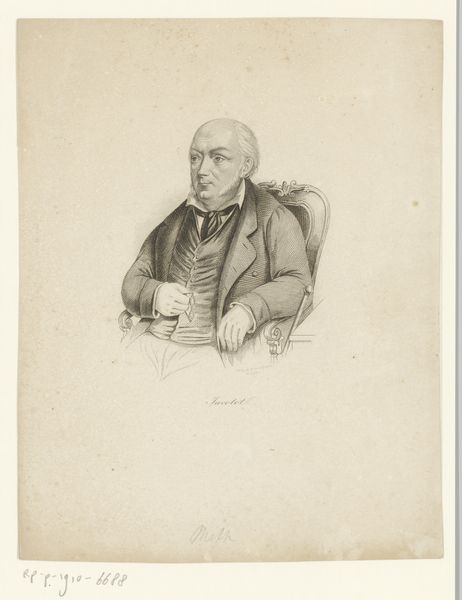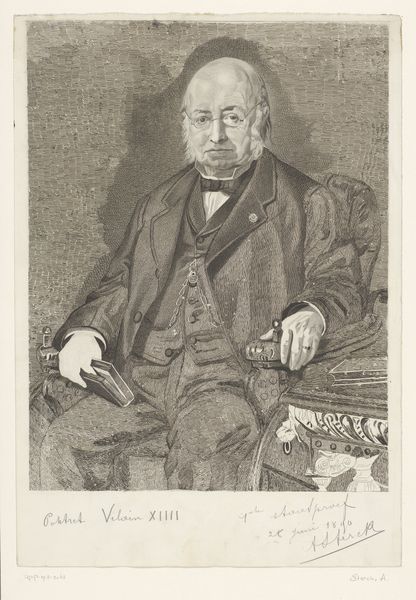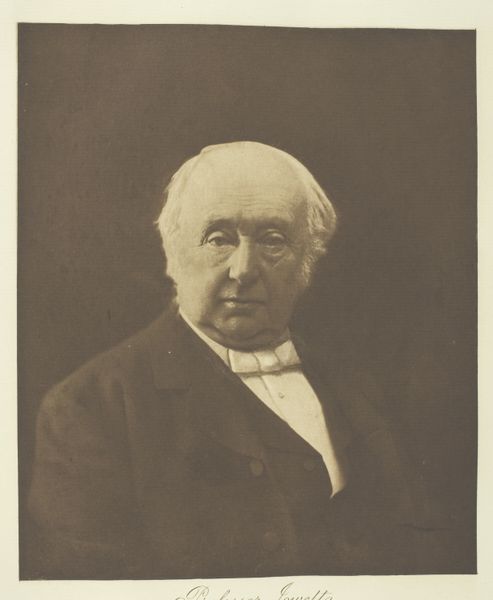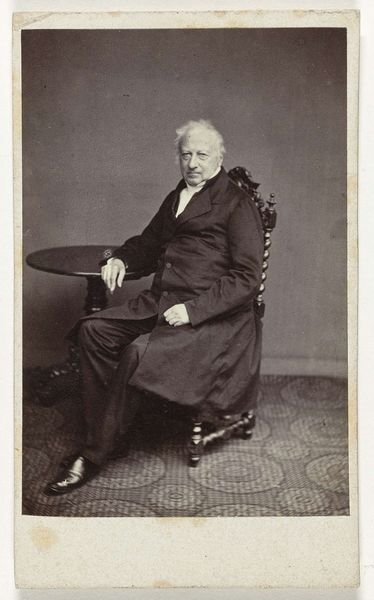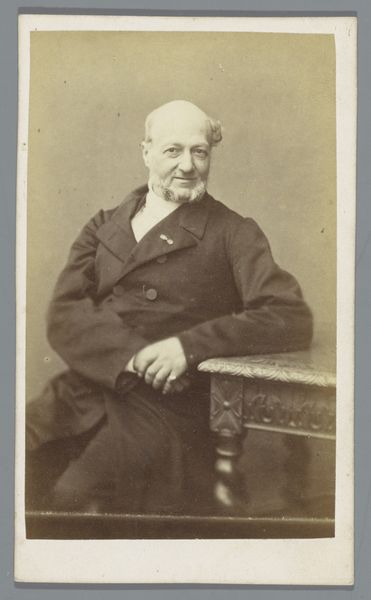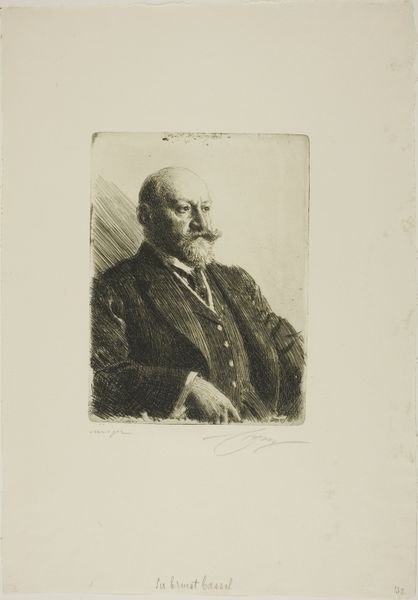
lithograph, print
#
portrait
#
neoclacissism
#
lithograph
# print
#
realism
Dimensions: 395 mm (height) x 324 mm (width) (billedmaal)
Editor: So, here we have Peter Gemzøe's "Major Johan Andreas Bruun Neergaard," a lithograph from somewhere between 1811 and 1875. It's a really striking portrait, very stately, and his gaze feels so direct. What strikes you when you look at this piece? Curator: What strikes me is the sitter’s posture. It conveys power, certainly, but also, perhaps, a degree of weariness. Considering this lithograph was created during a period of immense social and political upheaval, how might Neergaard’s image function within that context? Does he represent the established order, or could there be a more nuanced reading? Editor: That's a good point! I hadn't really thought about the potential conflict there. He seems very comfortable, almost entrenched. Could that comfort itself be a statement? Curator: Exactly. And let's consider the details: the carefully rendered clothing, the books on the table, the setting itself. These are all signifiers of status and intellect, but also tools for constructing an identity within a specific social hierarchy. How does the artist use realism to convey both the individual and his role within society? Editor: The realism definitely adds to that sense of immediacy, of encountering an actual person. It’s like he is actively choosing to be seen in this specific way. But then the print medium itself creates distance, doesn’t it? Curator: Indeed. The lithograph allows for wider distribution of his image. What impact did a readily available image of power have during that time? What discussions might it ignite, and amongst what audiences? Editor: I guess I was only considering the individual, but it makes total sense that his identity is deeply intertwined with the bigger picture. I never thought I would be able to analyze such an old piece and relate to modern sociology studies. Curator: These older artworks offer a tangible opportunity to ground abstract thoughts, thus they provide the best learning grounds to apply these analyses!
Comments
No comments
Be the first to comment and join the conversation on the ultimate creative platform.
